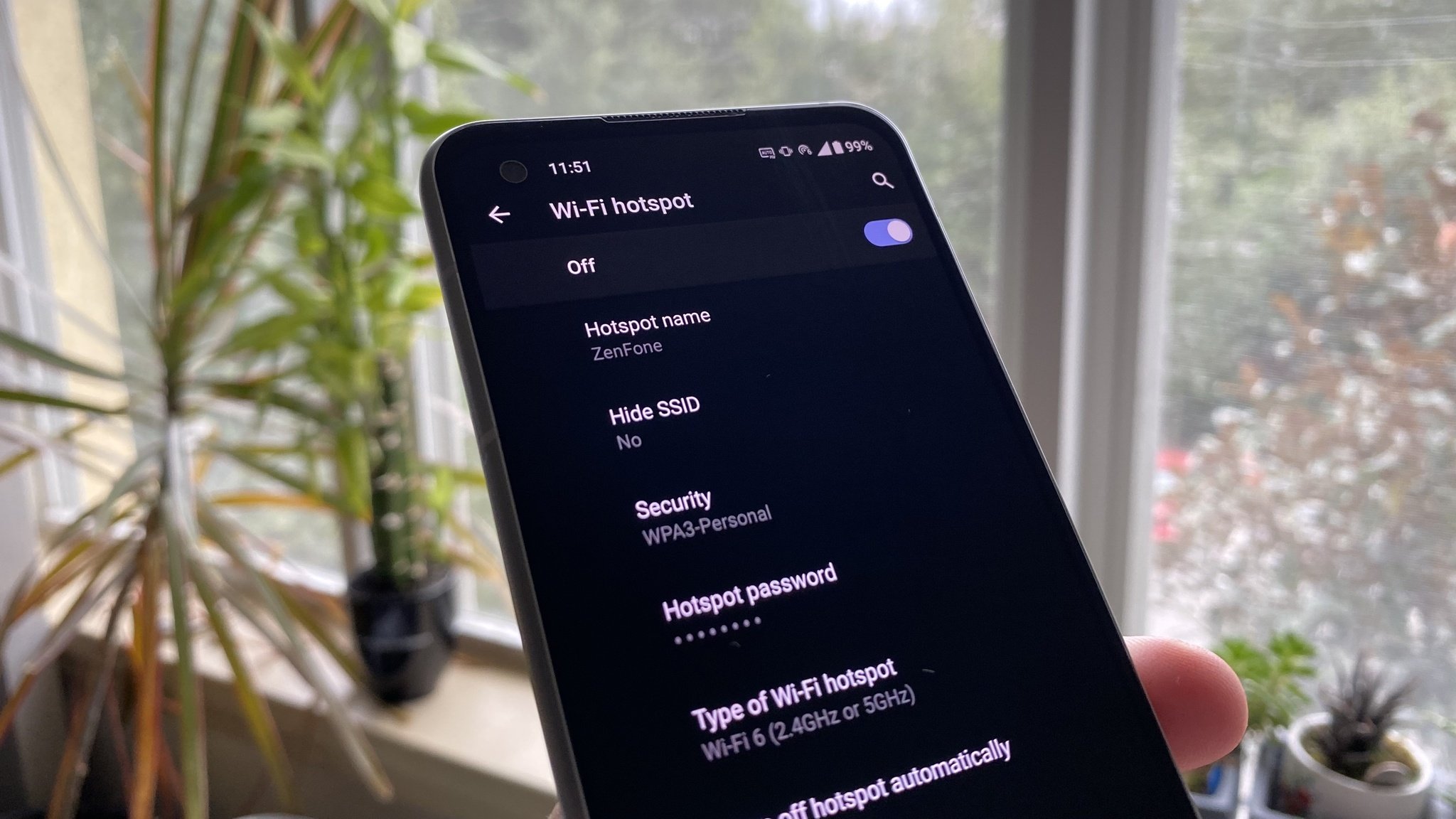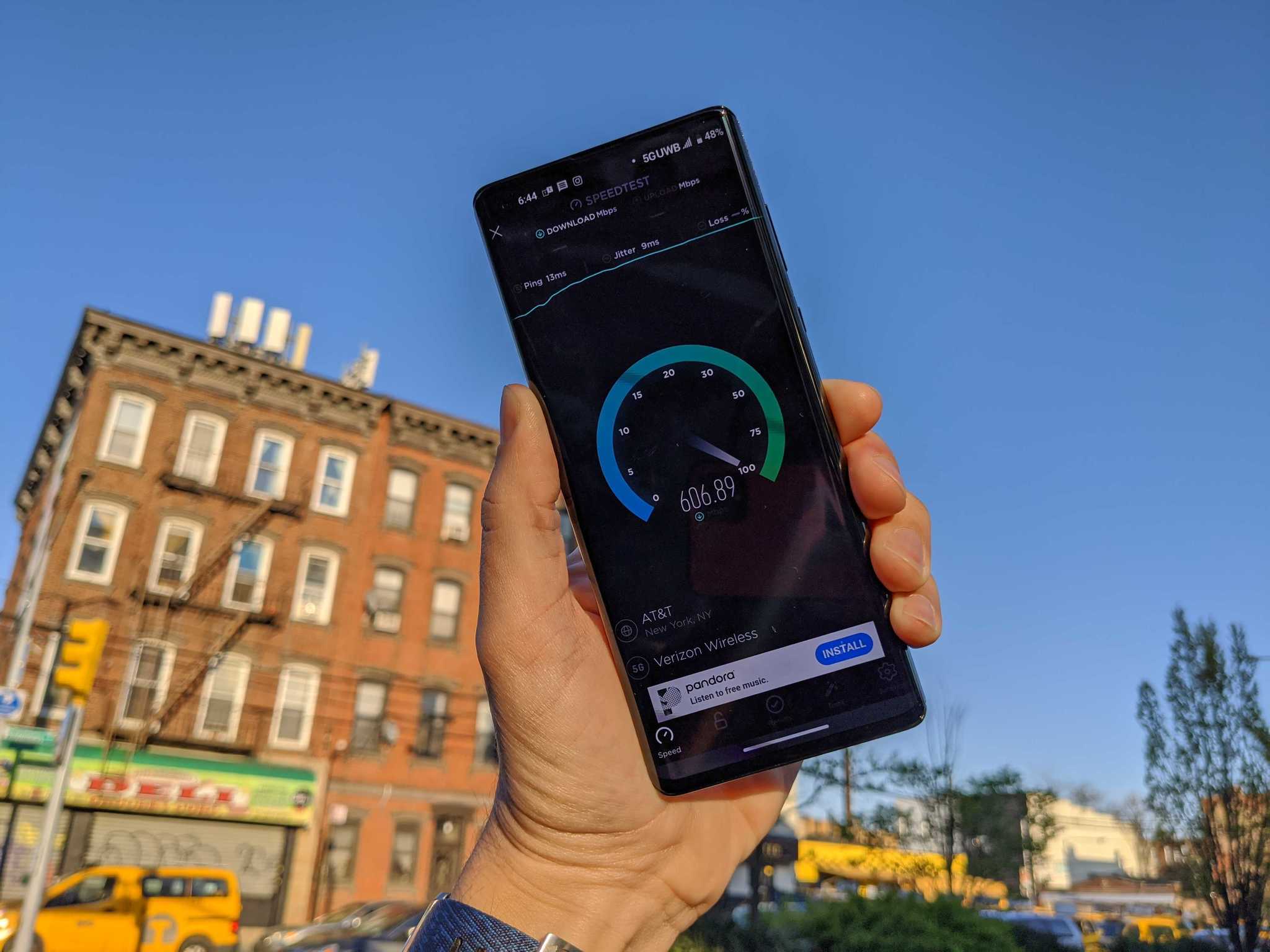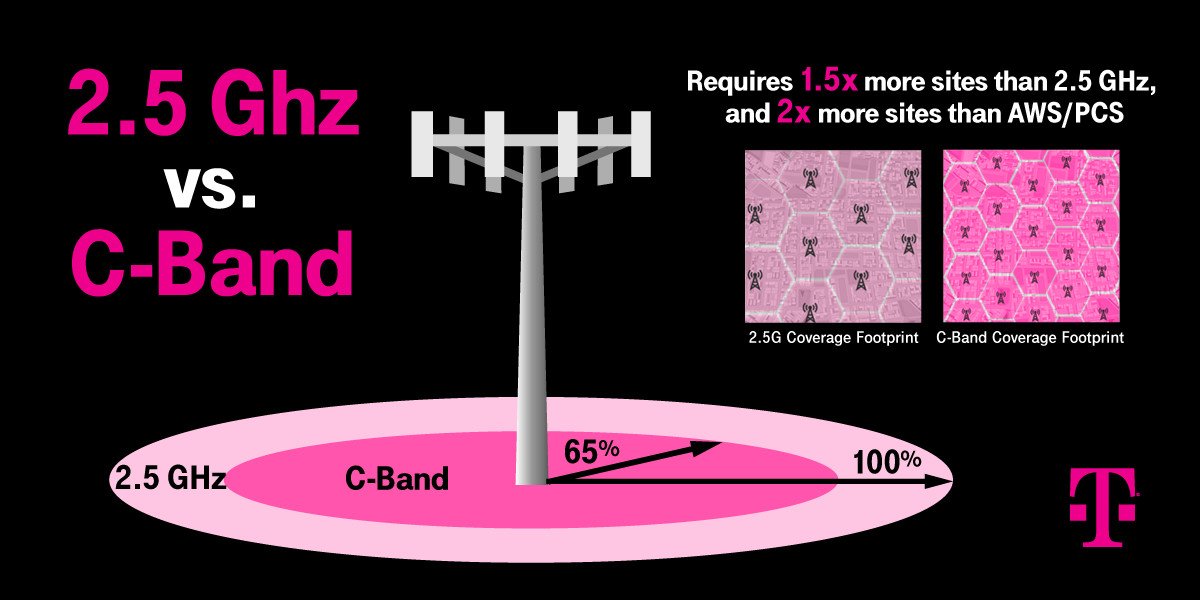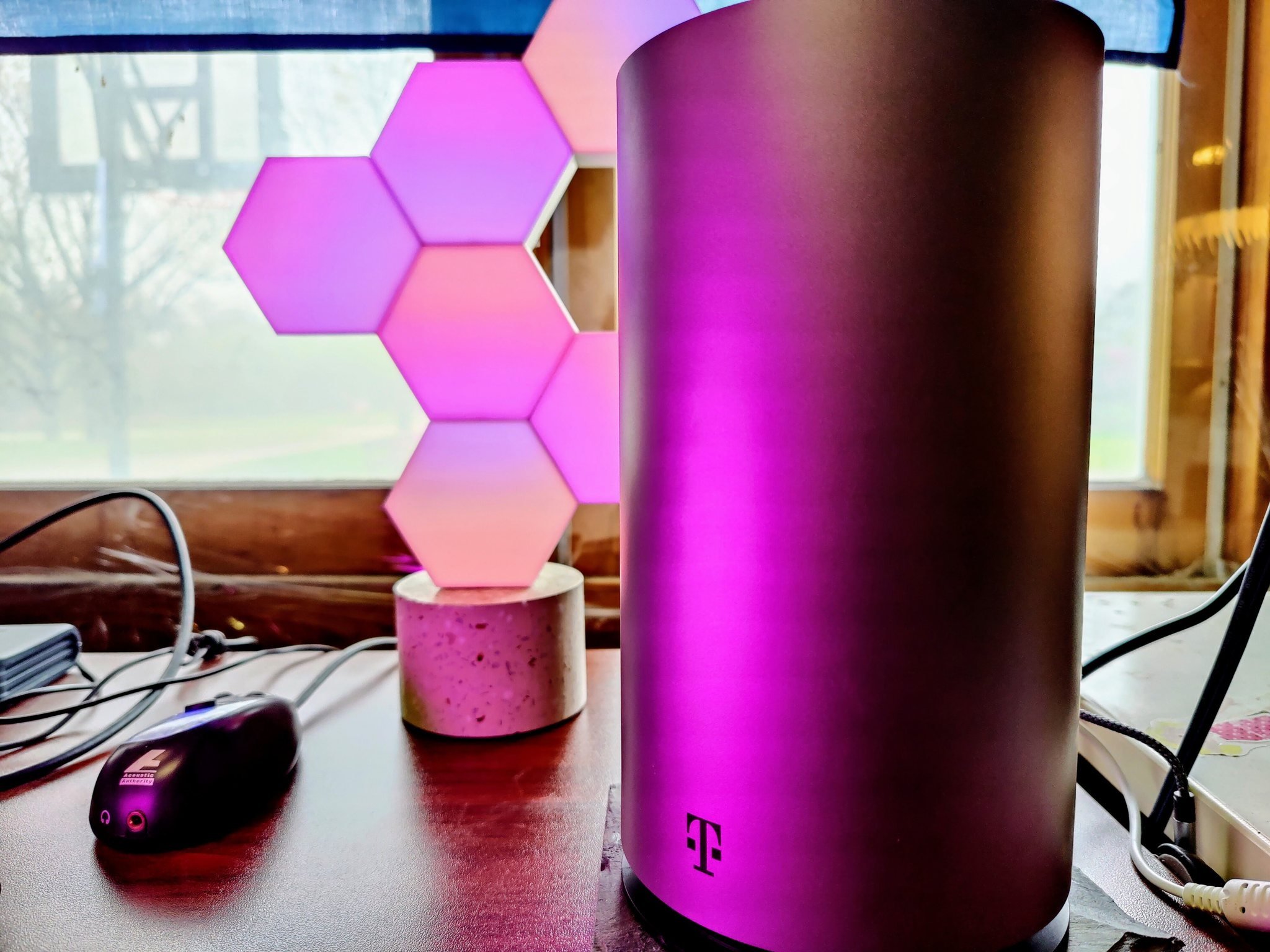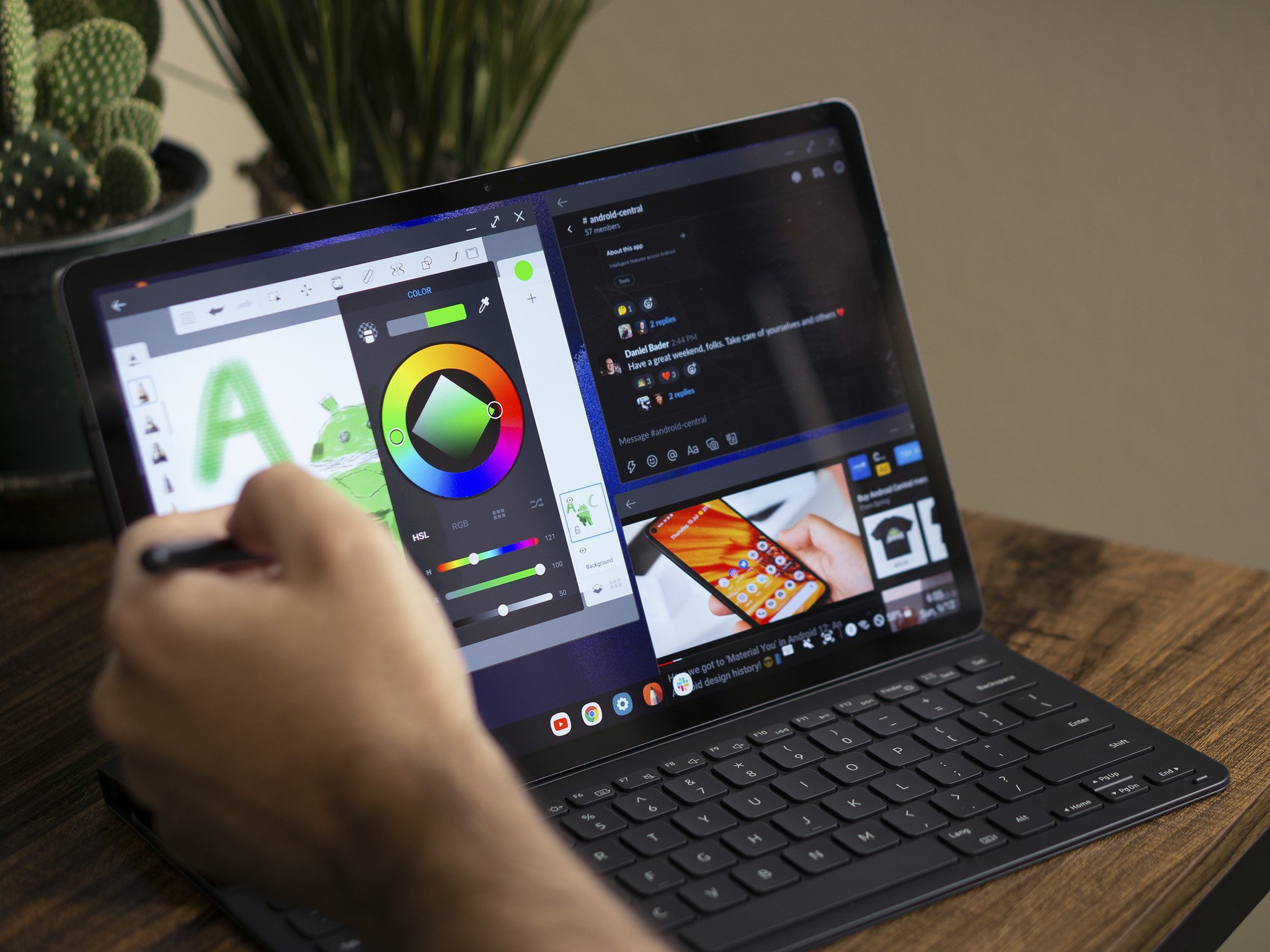Mobile hotspot, also known as tethering, is a feature on smartphones that allows them to share mobile data with any Wi-Fi device. This feature is a staple for many people that work from the road, whether they need a connection to process a payment or just want a little entertainment in the truck after a long day of driving.
While most of the best cell phone plans come with enough data for a little coffee shop browsing, those that spend a lot of time on the road can run out quickly. Carriers have promised increased speed and capacity with 5G connectivity, but most plans still don't reflect this upgrade, even as some LTE and 3G networks are shuttered for 5G development.
How does hotspot data work right now?
Most modern phone plans come with some hotspot data, and when you need it, it's great to have. T-Mobile, as an example, comes with 40GB of high-speed hotspot per month on its most expensive Magenta Max plan. Unfortunately, this data slows down to what T-Mobile describes as 3G speeds if you use that whole amount. Furthermore, T-Mobile requires that your primary data usage be used on your phone, not your hotspot. The other major carriers are similar in their restrictions though, AT&T and Verizon's cheapest unlimited plans won't work with a mobile hotspot at all.
40GB is a good amount for browsing and SD streaming, but if you want to download a large file such as a game from Steam on your laptop, you can go through it in a flash. It's worth noting that if you have a limited plan like AT&T's 4GB plan or a prepaid carrier like Tello, you can use all of your data in a hotspot.
Visible, on the other hand, includes an unlimited hotspot for one device though it's limited to just 5Mbps. Large downloads will take a long time on this slow connection, but the fact is that you can leave it going all day. Streaming from your smartwatch or tablet is easier and can even make the battery last longer since it won't need to connect to mobile data.
How can 5G change things?
Low-band sub-6 spectrum is the core of each carrier's nationwide 5G network. This spectrum is fantastic for coverage but lacks the bandwidth to deliver speeds much greater than a well-developed LTE network. While it is real 5G, it will succumb to congestion as more and more people upgrade to one of the best Android phones with 5G support. Sometimes it can be hard to remember why you upgraded at all.
Mid-band, C-band, and especially mmWave should have much less trouble when traffic increases. T-Mobile has a lot of mid-band spectrum at 2.5GHz with some more C-band spectrum for urban areas. In addition to this, each carrier has some C-band, and mmWave spectrum will be able to cope with crowds and high-density areas, though there are coverage and availability challenges as C-band will still take some time to open up.
When you run a speed test on T-Mobile's mid-band, you'll see speeds over 300Mbps most of the time, with peaks much higher. T-Mobile has also managed to cover 165 million people with this level of 5G as of mid-2021.
While 5G coverage is growing and capacity is improving with further upgrades in the works, as more people adopt 5G, it still faces many of the same challenges LTE did with capacity.
Verizon stands out when it comes to 5G capacity. While AT&T has been steadily making progress with mmWave, especially in large buildings like airports and stadiums, Verizon has continued to add cities to its Ultra Wideband coverage and improve within others. In addition, Verizon's top unlimited plans come with access to Ultra Wideband, and one major perk is unlimited mobile hotspot while connected.
It remains to be seen if this perk will continue as Verizon rolls out C-band 5G under the same name, but for now, if you live and work in an area with coverage, you can get some amazing speeds without touching public Wi-Fi.
Verizon now has also found a way to monetize this expensive deployment early with its fiber-like 5G Home internet service. 5G Home is available in 57 cities and is one of the first competitors to cable and fiber services in years by exclusively using mmWave. With a fixed antenna location, Verizon is able to circumvent coverage challenges and offer a stable and fast connection to eligible households.
T-Mobile's home internet also demonstrates how 5G can be used to offer unlimited high-speed internet at home. However, T-Mobile's approach is more focused on rural customers and relies more on slower 5G and even LTE to get things done. Still, having access to an unlimited broadband connection at all is a significant upgrade for many people.
What about a speed limit?
Visible set the bar low with a 5Mbps unlimited hotspot, but the idea makes a lot of sense. Letting customers loose to download 100GB video games or stream 4K video will put a lot of strain on the network. In these terms, a speed cap like home internet providers use makes more sense. This will allow people to continue to use the internet in an unrestricted way but can spread the burden of large, low-priority downloads over a longer period of time.
Carriers could also take a page out of the satellite internet provider HughesNet's book with Bonus Zone. Bonus Zone grants customers 50GB of additional data between 2 a.m. and 8 a.m., so speeds stay high during peak hours but still allows large downloads if you're willing to do a bit of planning. Most operating systems, as well as Steam, will enable you to schedule updates. At the end of the day, the internet is still a shared resource, so it makes sense to spread the load out as thinly as possible.
Should we want a plan for every device?
Data plans made for tablets are competitive and often quite good values. These plans have a lot in common with phone plans and even have unlimited options with their own mobile hotspot feature. Still, the problem remains that you're adding another monthly payment to your account for a single device to get connected. You'll also need the more expensive LTE or 5G variant of tablet like the Galaxy Tab S7.
My first internet connection involved a phone line, so picking up an always-connected laptop or tablet feels like magic, but I don't look forward to a future where all of my connected devices have their own 5G connection. Instead, I like the idea that I can upgrade my home network whenever I want, and all of my devices benefit.
There are also dedicated mobile hotspots. Hotspot plans work with 5G hotspots and can come with a ton of data for a reasonable price. For example, T-Mobile has a plan with its 5G hotspot that comes with 100GB of data for $60 per month. If you know you're going to be working or staying away from a dedicated connection consistently, it makes sense to add one to your account, but the rest of us don't always know when we'll need the connection.
Carriers will always compete with one another, whether it's in terms of coverage, services, or simply prices. As time goes on, plans will get more data, including mobile hotspots, but it's still likely to lag behind. Limiting mobile hotspot data makes a lot of sense to carriers trying to sell you on a tablet or hotspot plan. Still, with the increase in the popularity and usefulness of wearables, there's a good chance we'll all be using our mobile hotspots a lot more than before.
Source: androidcentral
